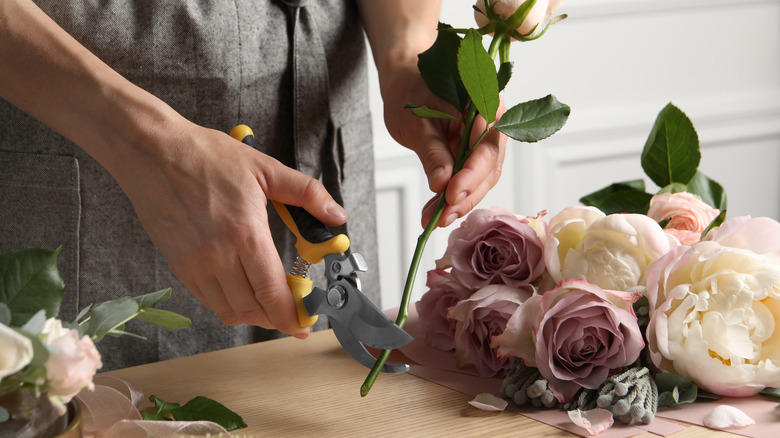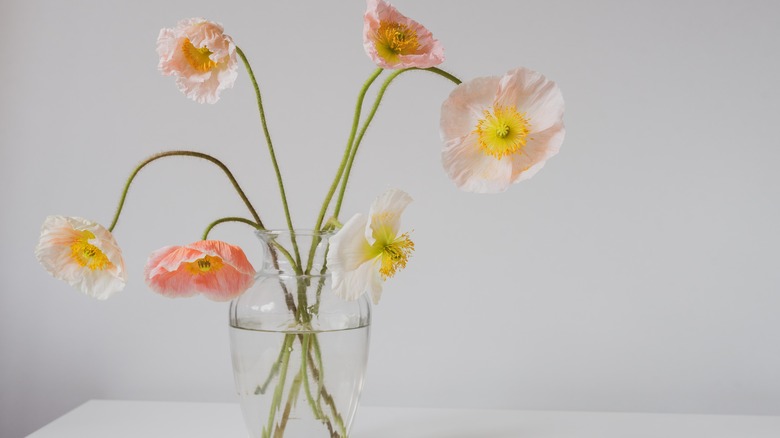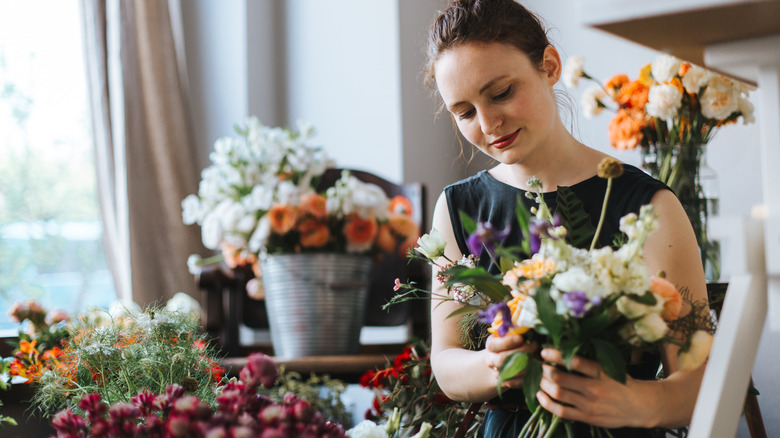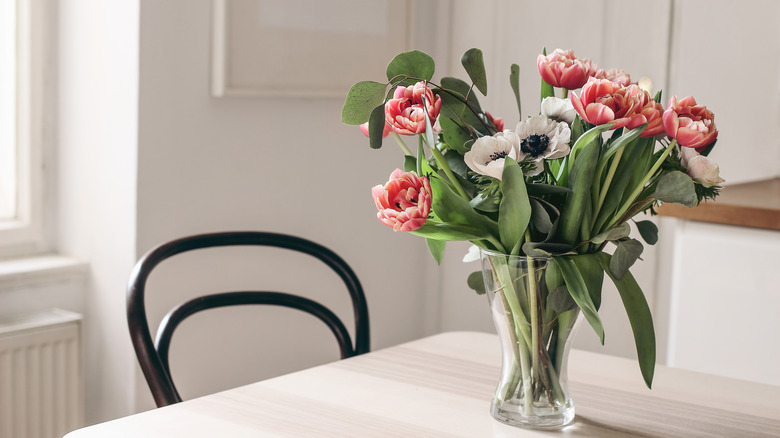The Fastest Fix For Wilting Flowers
Cut flowers are a gorgeous addition to any home but often fade far more quickly than we'd like to see them go. A vase full of beautiful blooms can soon become a morass of wilted, soggy petals and stems within just a few days. While these gorgeous blooms are perhaps a suitable metaphor for the fleeting quality of beauty, there are few things to consider if you want to prologue the life of your bouquets and arrangements as long as possible. You can take steps to prepare, care for, and feed your blooms, adding extra time for you to enjoy them fully at their prettiest.
According to Martha Stewart, you can set yourself up for longer-lasting flowers even before you get them home by considering where they come from. Locally grown flowers are often fresher and not quite as bedraggled from shipping as those from farther away. Some flowers, like zinnias, gerbera daisies, and dahlias, are known for longevity. Closed buds last much longer than those already open, for instance, roses, peonies, and tulips.
Preparation
Whatever the variety, one of the best ways to preserve long-lasting blooms is to start at the beginning. Make sure your vase or container is clean and free of any debris. Depending on the flower, you will want to use lukewarm water for bouquets. According to Florgeous, most flowers thrive best in room temperature or slightly warmer water, but bulbs prefer the colder variety. The right water temperature ensures that the capillaries in the stem will distribute water throughout the flower efficiently.
Next, you will want to trim the flowers before placing them in the container. The shorter the stem and the newer the break, the better water can get where it needs to go. Cutting the stems beneath a stream of water eliminates the air bubbles that may impede this process. Once you have trimmed them, place the flowers in the water as soon as possible, removing any leaves or growth that fall below the waterline. These can add to the bacterial levels by decaying faster than the rest of the flower. Avoid placing them in direct sunlight as it speeds up the growth of microbes. Flowers also abhor drafts and air conditioning, so the best place in your home for cut flowers is away from windows and air vents.
Care
Once you have prepared your flowers, what you do over the next few days can help prolong their lifespan. Most flowers do best if you change the water every day, or at the least, every other day. According to Martha Stewart, your water should be clean enough for human use. When changing the water, make sure to also thoroughly rinse and clean the vase. You should also remove any individual stems that look a little worse for wear. One decaying flower in a vase can cause the others to deteriorate much faster since bacteria spreads from bloom to bloom. According to ProFlowers, a quick cleaning solution can be created with a small amount of bleach — ¼ teaspoon to each vase of water. This diluted solution is mild enough for the flower and will slow the growth of microbes.
Not only should you clean the vase and change the water, but it may also help to carefully rinse each stem before returning it to the container. You can also recut the stems, which opens up the capillaries if blockages or bacteria are clogging up the works. According to The Bouqs Company, moisture-loving flowers, like hydrangeas, benefit from lightly crushing the stems to open them up.
Feeding
To keep your blooms incredibly fresh and perky, you must give them nutritional help. Many bouquets come with small packets of plant food that can be slowly added to the water over the lifetime of the flowers. According to Mental Floss, these packets contain a variety of elements, including citric acid and other chemicals that control the pH in the water. You can make your own solution with apple cider vinegar and sugar if in a pinch.
Sprite or other citrus soda mixed with water is also an excellent option. Add a little water each time you change the vase's, and your flowers will love you for it. With a few preparations and care, your flowers can last up to three weeks or more, depending on the variety on your kitchen countertop or bedroom. With a little effort, you can have beautiful, thriving blooms in your home all year round.



